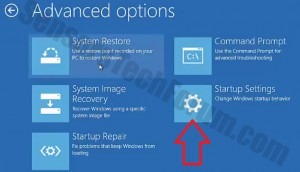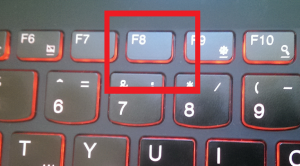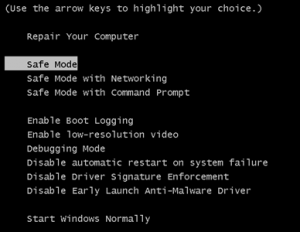| Name | W32.Mydoom.E |
| Type | Worm Backdoor |
| Short Description | May have trojan.downloader functions. Could perform DDoS attacks and might open undefended ports. |
| Symptoms | Slow PC, Opened ports, Unusually high network utilization without any logical reason. |
| Distribution Method | Spam Mail. |
| Detection tool | Download Malware Removal Tool, to See If Your System Has Been Affected By W32.Mydoom.E |
 W32.Mydoom.E is a dangerous worm that may open a backdoor to the affected PC and download and execute malicious files, making it completely defenseless. It is a variant of the infamous W32.Mydoom worm family. The worm may open several TCP ports so that it allows the attacker sending it out to connect to the computer directly and hence gain full access to the PC and the local network it is in. The worm is also believed to perform DDoS (Denial Of Service) type of attacks in scheduled times, depending on the attackers.
W32.Mydoom.E is a dangerous worm that may open a backdoor to the affected PC and download and execute malicious files, making it completely defenseless. It is a variant of the infamous W32.Mydoom worm family. The worm may open several TCP ports so that it allows the attacker sending it out to connect to the computer directly and hence gain full access to the PC and the local network it is in. The worm is also believed to perform DDoS (Denial Of Service) type of attacks in scheduled times, depending on the attackers.
W32.Mydoom.E – How Did I Get Infected?
Mydoom malware is being distributed mostly via spam email attacks. The spam mails are being distributed to both users as well as domains. According to researchers the spam mails associated with this worm may contain the following as their subjects:
→”Test;hi;hello;Mail Delivery System;Mail Transaction Failed;Server Report;Status;Error”
More to it than that the spam mail may contain different attachements, usually with a .txt document’s Windows icon on them and their file formats are believed to be one of the following:
→.bat, .cmd, .exe, .pif, .scr, or .zip
Also, researchers report that this particular worm could send out spoofed emails that resemble something or someone important or already familiar to the end user.
Here are some of the attachment names associated with this family of worms:
→”document; readme; doc ;text ;file ;data ;test ;message; body
As it is to the attached files, they may be one or more files of the following formats:”
→.htm; .txt ;.doc ;.pif ;.scr ;.exe ;.cmd ;.bat; .zip
W32.Mydoom.E – What can it Cause?
Once started running in the background undetected, the worm may begin to create .dll and .exe files in %System% %Temp% and %AppData% that contain scripts. These scripts may modify different settings, such as disabling firewall and opening several ports of the computer in order to enable the backdoor to download and run different external files.
It may also run active executable processes that contain the same names as some original Windows Processes, such as tasking.exe or svchost.exe.
However, the worm may not execute the files by its own. This is why it may ad various registry keys or values in HKEY_CLASSES_ROOT in order to make Windows Explorer to load the malicious files without any hic ups. It may also situate registry values to run commands on system startup in:
→HKEY_CURRENT_USER\Software\Microsft\Windows\CurrentVersion\Run
HKEY_LOCAL_MACHINE\Software\Microsoft\Windows\CurrentVersion\Run
Once it has executed it’s hazardous .exe material the worm then commands it to open several ports without the user’s consent. It can then download anything onto the infected PC. We are talking about Rootkits, Trojans, Spambots, Crypters to remain undetected on the PC for long periods of time and ofcourse Ransomware Trojans. Ransomware, such as CryptoWall 3.0 is the sole reason for over 18 million dollars lost last year in online extortion. What the viruses do is encrypt user data with strong encryption in order to extort users using deadlines for payment in return for the decryption keys.
What is more this family of Worms is famous for denial-of-service type attacks otherwise known as DDoS. In case you notice your date changed to another one there is a good chance you may soon become a victim of one. It is strongly advised to immediately extract your data from your computer so that you can ensure its safety.
Removing W32.Mydoom.E
It may not be an easy process to remove W32.Mydoom.E in case you have detected it on your computer. The software may have downloaded god knows what on your computer. This is why it is highly recommended to employ advanced anti-malware program that will make sure you remove any other threats and rootkits associated with it. In case you want to be sure you will detect any rootkits in the firmware of your computer. For satisfying results, please follow the removal instructions below:
Step 1: Start Your PC in Safe Mode to Remove W32.Mydoom.E.
Removing W32.Mydoom.E from Windows XP, Vista, 7 systems:
1. Remove all CDs and DVDs, and then Restart your PC from the “Start” menu.
2. Select one of the two options provided below:
– For PCs with a single operating system: Press “F8” repeatedly after the first boot screen shows up during the restart of your computer. In case the Windows logo appears on the screen, you have to repeat the same task again.
– For PCs with multiple operating systems: Тhe arrow keys will help you select the operating system you prefer to start in Safe Mode. Press “F8” just as described for a single operating system.
3. As the “Advanced Boot Options” screen appears, select the Safe Mode option you want using the arrow keys. As you make your selection, press “Enter“.
4. Log on to your computer using your administrator account
While your computer is in Safe Mode, the words “Safe Mode” will appear in all four corners of your screen.
Removing W32.Mydoom.E from Windows 8, 8.1 and 10 systems:
Substep 1:
Substep 2:
Whilst holding down Shift button, click on Power and then click on Restart.
Substep 3:
After reboot, the aftermentioned menu will appear. From there you should choose Troubleshoot.

Substep 4:
You will see the Troubleshoot menu. From this menu you can choose Advanced Options.

Substep 5:
After the Advanced Options menu appears, click on Startup Settings.

Substep 6:
Substep 7:
A menu will appear upon reboot. You should choose Safe Mode by pressing its corresponding number and the machine will restart and boot into Safe Mode so you can scan for and remove W32.Mydoom.E.
Step 2: Remove W32.Mydoom.E automatically by downloading an advanced anti-malware program.
To clean your computer you should download an updated anti-malware program on a safe PC and then install it on the affected computer in offline mode. After that you should boot into safe mode and scan your computer to remove all W32.Mydoom.E associated objects.
Preparation before removing W32.Mydoom.E.
Before starting the actual removal process, we recommend that you do the following preparation steps.
- Make sure you have these instructions always open and in front of your eyes.
- Do a backup of all of your files, even if they could be damaged. You should back up your data with a cloud backup solution and insure your files against any type of loss, even from the most severe threats.
- Be patient as this could take a while.
- Scan for Malware
- Fix Registries
- Remove Virus Files
Step 1: Scan for W32.Mydoom.E with SpyHunter Anti-Malware Tool



Step 2: Clean any registries, created by W32.Mydoom.E on your computer.
The usually targeted registries of Windows machines are the following:
- HKEY_LOCAL_MACHINE\Software\Microsoft\Windows\CurrentVersion\Run
- HKEY_CURRENT_USER\Software\Microsoft\Windows\CurrentVersion\Run
- HKEY_LOCAL_MACHINE\Software\Microsoft\Windows\CurrentVersion\RunOnce
- HKEY_CURRENT_USER\Software\Microsoft\Windows\CurrentVersion\RunOnce
You can access them by opening the Windows registry editor and deleting any values, created by W32.Mydoom.E there. This can happen by following the steps underneath:


 Tip: To find a virus-created value, you can right-click on it and click "Modify" to see which file it is set to run. If this is the virus file location, remove the value.
Tip: To find a virus-created value, you can right-click on it and click "Modify" to see which file it is set to run. If this is the virus file location, remove the value.Step 3: Find virus files created by W32.Mydoom.E on your PC.
1.For Windows 8, 8.1 and 10.
For Newer Windows Operating Systems
1: On your keyboard press + R and write explorer.exe in the Run text box and then click on the Ok button.

2: Click on your PC from the quick access bar. This is usually an icon with a monitor and its name is either “My Computer”, “My PC” or “This PC” or whatever you have named it.

3: Navigate to the search box in the top-right of your PC's screen and type “fileextension:” and after which type the file extension. If you are looking for malicious executables, an example may be "fileextension:exe". After doing that, leave a space and type the file name you believe the malware has created. Here is how it may appear if your file has been found:

N.B. We recommend to wait for the green loading bar in the navigation box to fill up in case the PC is looking for the file and hasn't found it yet.
2.For Windows XP, Vista, and 7.
For Older Windows Operating Systems
In older Windows OS's the conventional approach should be the effective one:
1: Click on the Start Menu icon (usually on your bottom-left) and then choose the Search preference.

2: After the search window appears, choose More Advanced Options from the search assistant box. Another way is by clicking on All Files and Folders.

3: After that type the name of the file you are looking for and click on the Search button. This might take some time after which results will appear. If you have found the malicious file, you may copy or open its location by right-clicking on it.
Now you should be able to discover any file on Windows as long as it is on your hard drive and is not concealed via special software.
W32.Mydoom.E FAQ
What Does W32.Mydoom.E Trojan Do?
The W32.Mydoom.E Trojan is a malicious computer program designed to disrupt, damage, or gain unauthorized access to a computer system. It can be used to steal sensitive data, gain control over a system, or launch other malicious activities.
Can Trojans Steal Passwords?
Yes, Trojans, like W32.Mydoom.E, can steal passwords. These malicious programs are designed to gain access to a user's computer, spy on victims and steal sensitive information such as banking details and passwords.
Can W32.Mydoom.E Trojan Hide Itself?
Yes, it can. A Trojan can use various techniques to mask itself, including rootkits, encryption, and obfuscation, to hide from security scanners and evade detection.
Can a Trojan be Removed by Factory Reset?
Yes, a Trojan can be removed by factory resetting your device. This is because it will restore the device to its original state, eliminating any malicious software that may have been installed. Bear in mind that there are more sophisticated Trojans that leave backdoors and reinfect even after a factory reset.
Can W32.Mydoom.E Trojan Infect WiFi?
Yes, it is possible for a Trojan to infect WiFi networks. When a user connects to the infected network, the Trojan can spread to other connected devices and can access sensitive information on the network.
Can Trojans Be Deleted?
Yes, Trojans can be deleted. This is typically done by running a powerful anti-virus or anti-malware program that is designed to detect and remove malicious files. In some cases, manual deletion of the Trojan may also be necessary.
Can Trojans Steal Files?
Yes, Trojans can steal files if they are installed on a computer. This is done by allowing the malware author or user to gain access to the computer and then steal the files stored on it.
Which Anti-Malware Can Remove Trojans?
Anti-malware programs such as SpyHunter are capable of scanning for and removing Trojans from your computer. It is important to keep your anti-malware up to date and regularly scan your system for any malicious software.
Can Trojans Infect USB?
Yes, Trojans can infect USB devices. USB Trojans typically spread through malicious files downloaded from the internet or shared via email, allowing the hacker to gain access to a user's confidential data.
About the W32.Mydoom.E Research
The content we publish on SensorsTechForum.com, this W32.Mydoom.E how-to removal guide included, is the outcome of extensive research, hard work and our team’s devotion to help you remove the specific trojan problem.
How did we conduct the research on W32.Mydoom.E?
Please note that our research is based on an independent investigation. We are in contact with independent security researchers, thanks to which we receive daily updates on the latest malware definitions, including the various types of trojans (backdoor, downloader, infostealer, ransom, etc.)
Furthermore, the research behind the W32.Mydoom.E threat is backed with VirusTotal.
To better understand the threat posed by trojans, please refer to the following articles which provide knowledgeable details.






